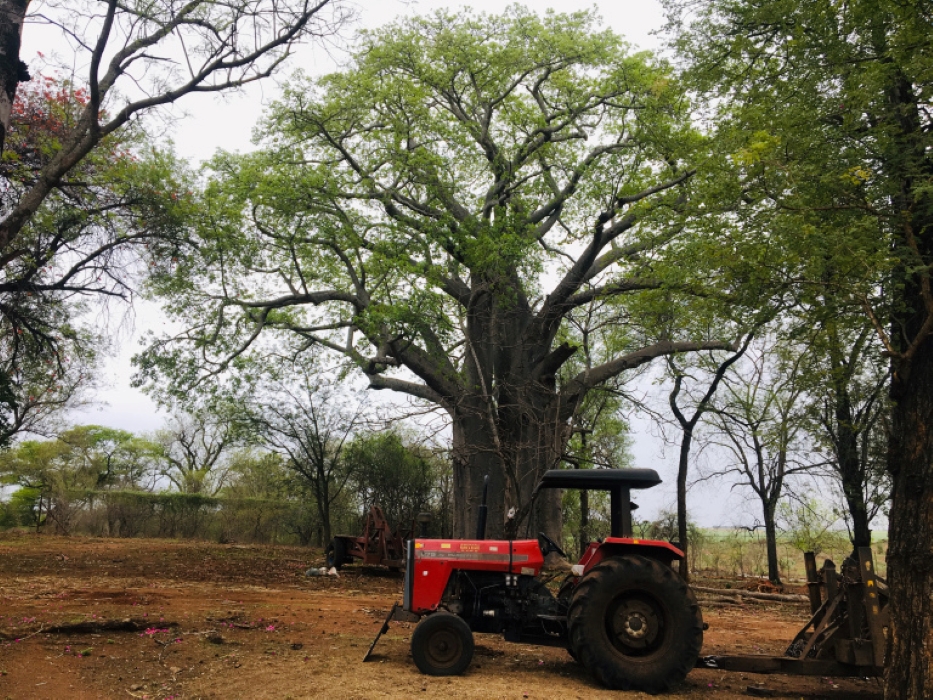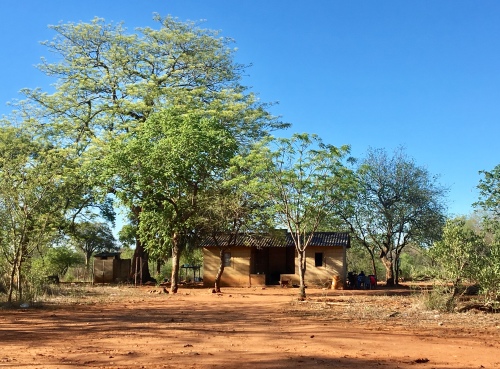
This post was written by Ian Scoones and first appeared on Zimbabweland.
What happened on the A2 medium-scale farms?
Medium-scale A2 farms were established in a very different way to A1 farms in Masvingo. They were not the result of invasion and occupation and later formalisation (or not), but through a process of application at a later stage. These application processes were supposed to take account of the qualifications and resources of the prospective farmer, and the aim was to establish a medium-scale farming sector to spearhead the revival of commercial agriculture, but under new ownership. In practice, the process of application was often manipulated, and political pressure was brought to bear. The result is that the beneficiaries of A2 farms are highly variable – many are former civil servants, including well-qualified agriculturalists amongst them, but they sit alongside those with party posts, military and security positions and others.
Our Masvingo sample of A2 farms is small. This is in part because, when the sample was set up in the mid-2000s, the A2 farms were only just being settled, and access was difficult. The contested nature of land on the A2 farms was such that research in these areas was initially regarded with suspicion, and we had to spend a considerable amount of time getting to know key players in each site. The other problem for any researcher of A2 farms is that the owners are often not present, and in some cases very little is happening.
Our Masvingo sample included dryland sites in each of four districts – Gutu (Northdale), Masvingo (Bompst), Chiredzi (Fair Range) and Mwenezi (Asveld). We also had a sample in the sugar estate of Hippo Valley, where a very different form of irrigated production takes place on smaller plots. Here we report on three of the dryland sites (excluding Northdale) (N=20) and the Hippo Valley site (N= 14), but take them separately. A more comprehensive study has been undertaken of A2 farms both in Masvingo and Mvurwi based on a random sample across all A2 farms, which will be shared on this blog soon.
The overall story of the dryland A2 cases is not positive, although there are a few outlier examples where agriculture has got moving. The Hippo Valley settlers irrigating sugar by contrast have fared much better. The disastrous economic conditions through the 2000s, peaking in 2008 with massive hyperinflation, have returned more recently, and it was only for a short period between 2009 and around 2014-15 when economic stability returned, and business investment of any sort was feasible.
Those with external funds – either through jobs or through forms of patronage – have fared best, but it has been a struggle for everyone. Bank credit has not been available, and outside the support through commercial crop contracts or the corrupt and inefficient command agriculture programme have been limited in Masvingo province, and it has been exceptionally difficult to finance farming. The conventional approach to commercial farming in Zimbabwe had always been to rely on bank loans, which would be paid back on harvest, and capital expenditure was sourced from profit, or further credit. This has simply not been possible over the past 20 years.
Dryland A2 farms
Across our dryland A2 sample, today the farms are more occupied, with men dominating as household heads (90%). Women are often quite isolated in these farms, sometimes left to manage the household and workers, and engaged in small-scale vegetable and poultry production. Men are more mobile, and travel to town, as nearly everyone has a car. In the past, 75% of (mostly male) household heads had jobs, but today it is only 20%, as people have moved to their farms, finding it impossible to maintain a job and farm.
Quite a number have retired, and the average age of household heads is today 52. Given the age profile, 60% have adult children between 21 and 30 years old, and 35% of all households have children in this age group who are farming. Many farmers’ children have taken up plots within the A2 farm allocation, even if subdivision hasn’t been formalised. 35% were previously war veterans, reflecting the numbers of A2 farmers who were previously in the armed or security forces. Educational levels are high, with 65% continuing in education beyond Form II, while 55% have Master Farmer certificates, reflecting the need to show farming qualifications when applying (at least for some).
Even though farm sizes are large (average 160.2 hectares), crop production is relatively limited (on average 11.7 hectares was ploughed), with maize production ranging from only 353 kg to 1462 kg per household between 2017 and 2019, with between 65% and 35% producing over a tonne. This is very low productivity, and although nearly everyone adds fertiliser, this is far from the envisaged commercial farming (although this data comes from farms mostly in dry and marginal Region V, as our Gutu site has not been included). Indeed, while 60% and 20% of farmers employ permanent male and female workers respectively, and 45% employ temporary workers, on-farm wage employment is not universal, indicating again the lack of commercialisation. Although 25% received some form of command agriculture support, it was widely complained about, and was not seen as a route to improvement by most. Production overall is lower than many A1 farms on much smaller land portions. Other crops are combined with maize, but in very small portions, essentially replicating small-scale, peasant farm production on huge farms.
The farms in Chiredzi and Mwenezi, however, are largely focused on livestock production, and the large land areas allow for relatively high herd sizes, averaging 72.3 cattle, at quite intensive stocking rates for such dry ranch areas. But despite this, there is relatively little commercial activity, and only 35% of farmers purchased supplementary feed for cattle. On average 6.9 cattle per household were sold in the past year, and only 2.6 were purchased over the previous five years. Goats complement cattle, but they are not produced commercially in large flocks, and the average household ownership is only 9.1.
To complement crops and livestock, dryland A2 farmers in our sample also produce poultry, and broiler production seems a popular activity, with 30% having broiler units, and 10% having contracts for these. Irrigated vegetables are also grown, but usually on small homestead plots, and 35% of households sell these. Off-farm income remains important, and over half have jobs, while 40% of households receive pensions. Half of all A2 farmers rent out houses in town (having now transferred to their farms), and this is an important source of supplementary income.
The forms of settlement on these farms varies considerably. Some maintain the farm as a business, employing a farm manager and supervising from a distance, with weekend visits. Others live on the property and have intensive involvement in the running of the farm on a day-to-day basis. Still others have retired to the farm, and use other sources of income to survive, it being more a retirement home than a fully productive farm. Others try and farm, but have invited family members to join them, creating small villages with subdivided or jointly-operated plots; essentially multiple small-scale farms. In our wider province-wide surveys we explored these patterns, and rather like our earlier study of the ‘small-scale commercial farms’ set up as African ‘purchase areas’ between the 1930s and 1950s, we see various future trajectories, only some of which could represent ‘commercial farming’, as imagined by the land reform planners.
Certainly many A2 farmers are trying, but it is a tough struggle. In many cases, these farms had to be carved out from the bush from scratch. Mr N from Fair Range near Chiredzi explained his story:
It was virgin land when I came in 2003. I cleared just one hectare in my first year. By 2006, I had a small irrigation plot of 3 ha, and then I continued to clear. I was in hospital for a while, and the bush all grew back. I had to start again. In 2011 I hired a bulldozer, and cleared 8 ha. I tried to hire tractors but it was difficult, as local whites discriminated against us. By 2016 I had 40 hectares cleared, but it was a lot of work, and very expensive. I had hoped to rely on dryland farming largely, but the rainfall pattern has changed. I now must irrigate, but the electricity supply is so variable. Right now I am irrigating only a day a week, and I may lose my crop. It’s so difficult! In the last years I have managed to buy new equipment. I bought tractors in 2014 and 2019, and have bought six pumps, a disc harrow, a ripper and a ridger. I also replaced my car in 2014 to get a jeep for this terrain. I have been investing in the farm, but neglecting my accommodation. I am living in this workers’ house, so I plan to build a big house for my retirement.
Mr N from Fair Range near Chiredzi
The average figures presented from the surveys therefore only tell part of the story. Within our sample, like Mr N, there are examples where farmers have managed to get things moving, but this has been incredibly hard. One farmer in Bompst farm for example invested a huge amount early on in irrigation equipment and for a time was doing well, but his business collapsed as inflation took hold. He then abandoned the farm, renting it out to others, returning to his town-based business operation, and has only just returned after nearly a decade to revamp the farm, having secured support through the command programme. Another farmer again invested from his off-farm job, which was paid in foreign exchange, through the economic crisis and it began to build up, connecting livestock production and vegetable sales to a shop and later a restaurant in Masvingo. But in recent years as the economy nose-dived again, the businesses have faltered and even this tightly managed, locally-based value chain was unable to operate in the chaotic currency environment from 2017.
Our wider, province-wide survey of A2 farms found a similar pattern: most were struggling, but a few prospering due to particular conditions, linked to particular financing opportunities. The period of investment from 2009, when the economy stabilised somewhat and the Zimbabwe dollar currency was abandoned in favour of US dollars, was widely evident. This period showed the potential of the A2 sector, but also the lack of resilience of farm businesses, as gains have been quickly wiped out, and investments made then (in equipment, irrigation facilities and so on) are lying idle.
Irrigated A2 farms: Sugar-growing in Hippo Valley
The largely dismal experiences on the dryland A2 farms contrast with those in the irrigated sugar farms in Hippo Valley. Here farmers were allocated on average 20.6 hectare plots, subdivided from former white and Mauritian outgrowers. There has been very limited turnover in this site. One farm in our sample is currently not being used as the owner died and his wife, who inherited the farm, could not cope with the accumulated debts. A plan to work with a contracting firm to produce animal feed for an abbatoir using the centre pivots has been proposed, but not yet realised. One other farm has been subdivided and allocated to two wives as part of an inheritance, but otherwise the farmers who took over the plots in 2002 – or their wives – are still farming.
The average age of sugar farmers is higher than any other resettlement category, with household heads being 57 on average. Those who gained plots were usually well-established men in jobs. In our sample the most common job was being a teacher or headmaster, followed by a sugar estate worker, followed by working for the ministry of agriculture. Some original farmers have passed on, and wives have inherited, with 28.6% of all farms in our small sample being run by women. When farms were taken over, 71% had jobs, but today this is down to 36% as people have retired or decided to concentrate on sugar farming.
With this pattern of household demography, all households have adult children in the 21-30 age range, but none are involved in farming. This reflects the high educational levels of both household heads (93% having continued in education after Form II) and children, who have largely gone on to professional jobs, like their parents. 29% of households receive remittances, including from these children.
Average production over four years is 1570 kg of raw cane in the Hippo Valley site, and this fluctuates considerably less than in dryland farming. Production levels overall among the new outgrowers has surprised many, including the estate management, as we discovered in our focused study of sugar growing in the lowveld. Today, outgrowers, who are producing yields at level if not higher than the estate, are central to lowveld sugar industry.
Since settlement, the estate has provided inputs – including guaranteed irrigation water, fertiliser, replanting ratoons and so on – on the basis of a contract with the mill. While every outgrower complains (naturally) about the conditions set by the estate and oligopolistic power of the mill, the ability to gain finance and inputs and have a guaranteed market is a major contrast to the conditions faced by dryland farmers (and other sugar growers in the region). Other crops grown include vegetables, with several in our sample producing significant quantities, amounting to between US$2000 and $US5000 annual income, alongside a limited amount of maize. On average 3.6 cattle are kept along with on average 4.4 goats, but the main operation is sugar.
All farmers employ permanent male workers, and 93% employ female workers too, and all farms rely on temporary workers for cane cutting and other jobs. The infrastructure of the former farmers is used by the new farmers, including worker compounds and farm houses, previously used by farm owners and their managers. All households in our sample have piped water and electricity and so the general level of infrastructure is far higher than other resettlement farms as it was taken over at settlement.
Sugar production is certainly hard work, but it is profitable, despite the complaints. And when complemented with vegetable production and some maize and other crops produced for own use, plus other off-farm income from jobs, remittances, house rental (43%) and grinding mill investments (28%), the situation in Hippo Valley at least is much better than the dryland farmers on A2 farms.
But across the A2 sites, we heard again and again complaints about the lack of state support. A sugar farmer in Mkwasine/Fair Range complained:
Our ministers just don’t care about us, they don’t know about growing sugar cane. They know maize and tobacco from the Highveld only. We don’t get any ‘command’ support, we are ignored. We don’t get good deals from the company, and we are heavily taxed. The company is stealing the money, as the bosses were corrupt. But we, the farmers, produce the best sugar in the world. Those who came here and just do dryland cropping are better off. They came through their (political) connections and had cleared fields, they continue to get support.
A sugar farmer in Mkwasine/Fair Range
Asked about the future, he said:
We can’t foretell, we can’t predict, we can’t say because of climate change. We don’t know if the rain will come, and if we have more droughts, everyone will suffer and the nation will not have food. This is why looking after farmers is so important.
A sugar farmer in Mkwasine/Fair Range
The story of A2 farms in Masvingo province is therefore highly variable. There are successes and failures, and much depends on the ability to raise finance – through links to patronage (such as via command agriculture), to off-farm jobs (especially if paid in foreign exchange) or to outgrower arrangements for sugar production on the Hippo Valley and Mkwasine (for some Fair Range farmers) estates. However the wider macro-economic conditions are not conducive, and the prospects for many are poor. A2 farms in Masvingo have a long way to go before they can be the basis of a vibrant, new commercial agriculture, and this in particular will require new forms of secure and reliable finance.
Led by Felix Murimbarimba, the Masvingo team is: Moses Mutoko, Thandiwe Shoko, Tanaka Murimbarimba, Liberty Tavagwisa, Tongai Murimbarimba, Vimbai Museva, Jacob Mahenehene, Tafadzwa Mavedzenge (data entry) and Shingirai, the driver. Thanks to the research team, ministry of agriculture officials and the many farmers who have supported the work over the years.
All photos credit: Ian Scoones.



